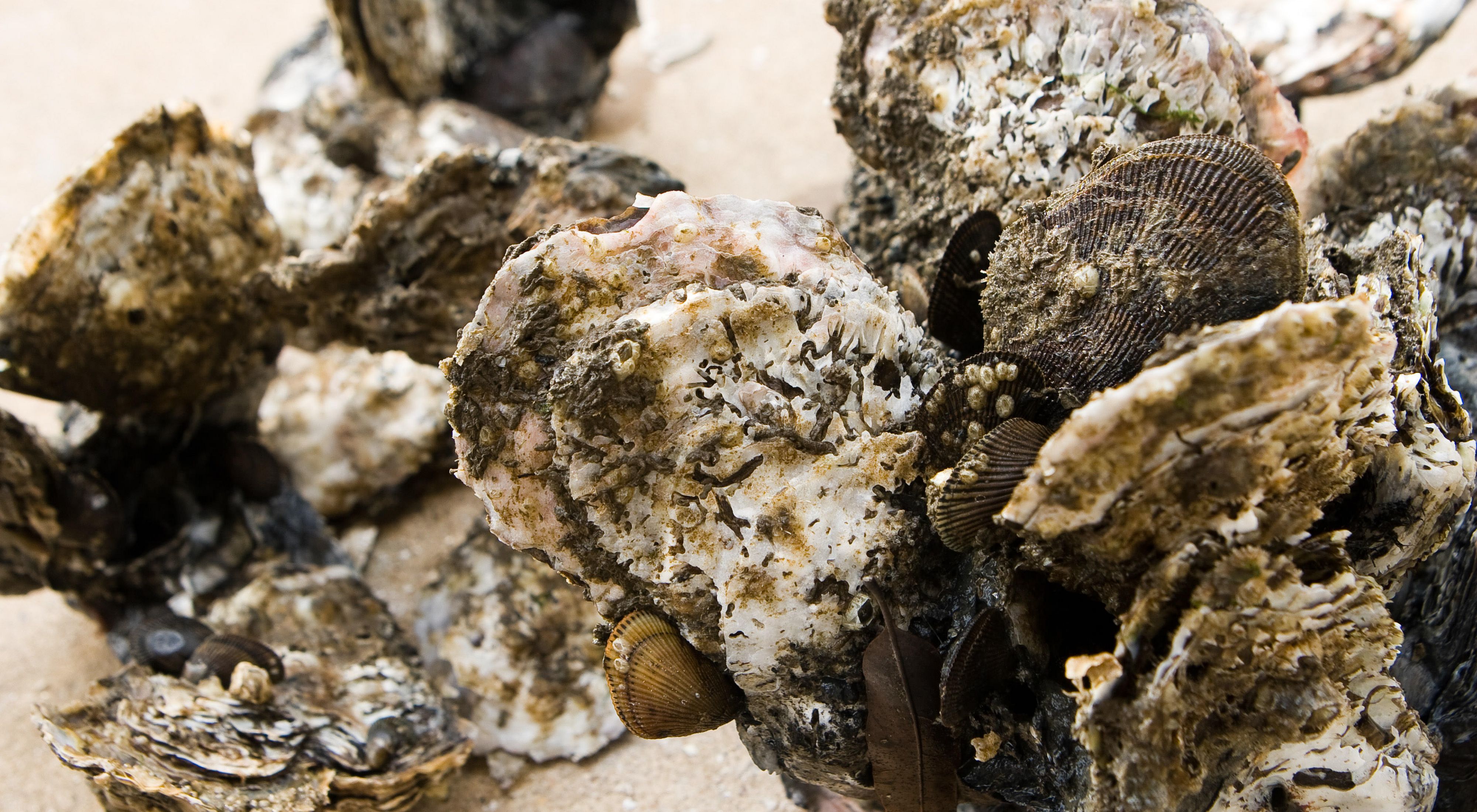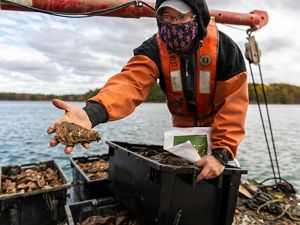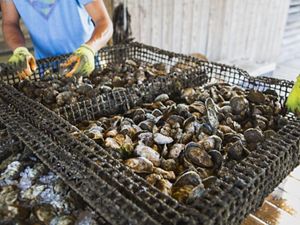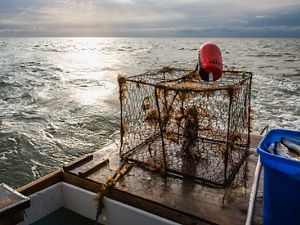For generations, oysters have played an important role in the Chesapeake Bay’s economy as a food that locals, tourists and the global market love.
In fact, it’s possible they have been loved to death.

Overharvest, pollution and disease have decimated oyster populations over the last hundred years. But The Nature Conservancy and its partners are working to turn the tide in an aggressive and concerted effort to restore oyster reefs in 10 Chesapeake Bay tributaries by 2025.
Oyster restoration has long been a priority for TNC. Oysters filter sediment and algae and remove nitrogen and phosphorus—harmful pollutants in excess—from the water, while their reefs provide nurseries and feeding grounds for rockfish, crabs and other commercially and recreationally important species.
Recent and dramatic changes in the public policy arena, coupled with emerging scientific understanding and the creation of large-scale oyster sanctuaries, are providing a clear path forward to restore this keystone species.
SOAR in Maryland: Supporting Oyster Aquaculture and Restoration
When COVID-19 shuttered restaurants in 2020, Chesapeake Bay oyster growers found themselves faced with a grim reality: no place to market their shellfish, which were beginning to grow too large for raw bars. Suddenly their industry—in which it can take up to three years to grow an oyster to the ideal size to sell to restaurants—was in dire straits.
As 2020 drew to a close, TNC worked with private donors and other partners to purchase more than 5 million surplus farmed oysters from growers in Maine, New Hampshire, Massachusetts, New York, New Jersey, Washington and Maryland. All of the oysters purchased from Maryland oyster farmers will be placed on sanctuary reefs in the Chesapeake Bay, helping those reefs grow to meet restoration goals.
Quote: Karl Roscher
The value of SOAR extends beyond this project. It will serve to create partnerships that will result in new market opportunities and enhanced conservation efforts in the years to come.
Oyster aquaculture in the United States has many benefits; providing jobs in coastal communities; creating a sustainable source of seafood; improving water quality and the health of our oceans and estuaries; and providing habitat and nurseries for fish, crabs, and other species. TNC supports oyster aquaculture as a sustainable industry that takes the pressure off of wild oysters that have been overharvested for centuries.
The Bay’s oyster aquaculture industry—one of the largest on the East Coast—can contribute to conservation, while providing sustainable seafood and green jobs.
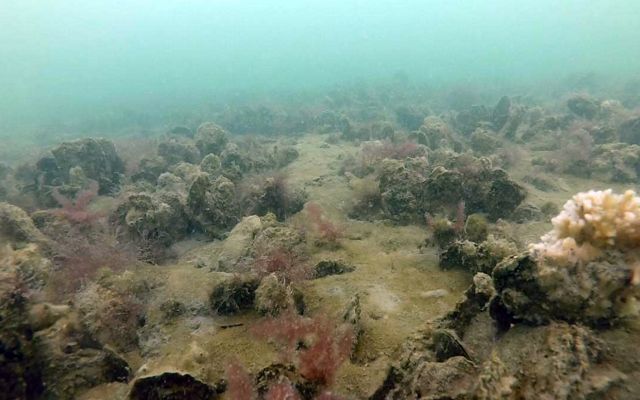
Restoration Success: Bigger than the National Mall
The Chesapeake Bay marked a major milestone in 2015 with the completion of the world’s largest oyster restoration project at Maryland’s Harris Creek. A study released in 2018, funded in part by TNC, shows the benefits from investing in large-scale oyster restoration.
At 350 acres, the Harris Creek reef is bigger than the National Mall and was seeded with more than 2 billion oysters. These oysters were bred at the University of Maryland's Horn Point Hatchery, where they were selected for their resistance to dermo (Perkinsus marinus) and MSX (Haplosporidium nelson), two diseases that have decimated oyster populations over the last 60 years.
As a tributary of the Choptank River, Harris Creek eventually flows into the Chesapeake Bay, where oyster populations are at a tiny fraction of their historic levels. Recognizing their value to Bay health and the economy, in 2014 the states of Maryland and Virginia—in partnership with the federal government and private industry—renewed their commitment to restoring oysters to the Bay. Harris Creek is one of five Maryland tributaries and 10 baywide targeted for restoration as part of that effort.

Quantifying the Benefits
A study released in 2018 aimed to understand the ecological impact of the Harris Creek restoration and quantify its benefits.
Using a new web-based computer model, the Virginia Institute of Marine Science (VIMS) and the University of Maryland Center for Environmental Science (UMCES) estimated the water filtration and nutrient removal capacity of the restored Harris Creek oyster sanctuary reefs. Among the highlights from the study’s findings:
- The restored reefs are able to filter the full volume of Harris Creek in less than 10 days during summer months.
- Based on collected data, the restored reefs have the potential to remove one million pounds of nitrogen from the Chesapeake Bay over a decade.
- The water filtration benefits of the reef are provided by more than the oysters. Mussels and tunicates living on the reefs contribute more than 40% of the total filtration.
The study shows that oyster restoration is an important and cost-effective addition to the suite of approaches that make up Bay recovery efforts. What makes this such a smart investment is not just the role oysters can play in water quality, but also the numerous co-benefits that come with a healthy reef.
Reefs can take the punch out of storm waves and help slow the rate of erosion along marsh edges. As they grow, oyster reefs accrete vertically, keeping pace with sea level rise and increasing their capacity for storm protection.
Quote
Oyster restoration is an important and cost-effective addition to the suite of approaches that make up Bay recovery efforts.
The study was led by VIMS researchers Lisa Kellogg and Mark Brush, and UMCES researcher Jeff Cornwell. The study was funded by The Nature Conservancy, the Oyster Recovery Partnership and the National Oceanic and Atmospheric Association (NOAA).
The model, developed by Brush, is available online for anyone to use. Placing this type of decision-support tool directly into the hands of resource managers creates the potential for application around the Bay and in other estuaries.
By restoring and repopulating large oyster reefs in key parts of the bay, we hope to reach a tipping point where oyster populations become sustainable, expanding their numbers and the benefits they and their reefs provide.

Chesapeake Oyster Alliance
In 2019 TNC became a part of the Chesapeake Oyster Alliance, a multi-year effort designed to spark governmental action, public attention and funding to accelerate ongoing oyster restoration efforts in the Chesapeake Bay.
The ambitious goal of this collaborative effort is to add 10 billion oysters by 2025 in Virginia and Maryland waters. The key components of the effort are:
- Restoring oysters in sanctuaries
- Improving science-based fishery management
- Increasing oyster aquaculture
A diverse group of partners are committed to the alliance, including community organizations, universities, NGOs and corporate and private partners. By generating new partnerships and sparking innovation, this coalition will accelerate efforts that already show tremendous promise for the Bay's oyster populations.
Online Tools
-

Harris Creek Restoration Model
An online decision making tool that simulates water quality, ecosystem dynamics and function of restored oyster reefs. Use the Model
We Can’t Save Nature Without You
Sign up to receive monthly conservation news and updates from Maryland/DC. Get a preview of Maryland/DC's Nature News email.

